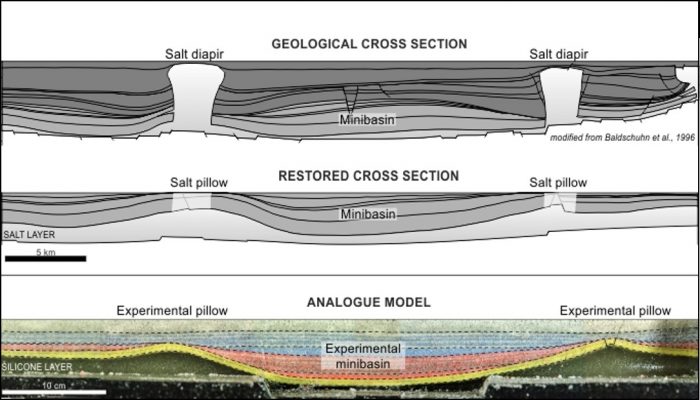
What is the influence of salt tectonics on the evolution of sedimentary basins and how can we reconstruct such salt features? Michael Warsitzka, PhD student at the Friedrich Schiller University of Jena, explains which complementary methods he uses to better understand salt structures and their relation to sedimentary basins. Enjoy!

Credit: Michael Warsitzka
Reconstruction of salt tectonic features from analogue models and geological cross-sections
Michael Warsitzka, PhD student, Institute of Geosciences, Friedrich Schiller University Jena
Salt tectonics, as a sub-discipline of structural geology, describe deformation structures developing due to the special deformation behaviour of salt (as synonym for a sequence of evaporitic rocks). Salt behaves like a viscous fluid over geological time scales and, therefore, it may flow due to lateral differences in thickness and density of the supra-salt layers. This influences the structural evolution of sedimentary basins, because salt flow can modify the amount of regional subsidence of the basin. Local sinks (“minibasins”) develop in regions from where salt is squeezed out and salt structure uplifts, e.g. diapirs or pillows evolve in regions of salt influx. Unfortunately, temporal changes of salt flow patterns are often difficult to reconstruct owing to enigmatic ductile deformation structures in salt layers. Understanding the evolution of salt-related structures requires either forward modelling techniques (e.g. physically scaled sandbox experiments) or restoration of sedimentary and tectonic structures of the supra-salt strata.
In my PhD thesis, I tried to integrate both, analogue modelling and restoration, to investigate salt structures and related minibasins developed in the realm of extensional basins. The sandbox model is a lab-scale, simplified representative of natural salt-bearing grabens, e.g. the Glückstadt Graben located in the North German Basin (Fig. 1). A viscous silicone putty and dry, granular sand were used to simulate ductile salt and brittle overburden sediments. Cross sections were cut through the model at the end of each experiment to conduct reconstruction of the final experimental structures. The material movements were monitored with a particle tracking velocimetry (PIV) technique at the sidewalls of the experimental box.
(text continues below figure)
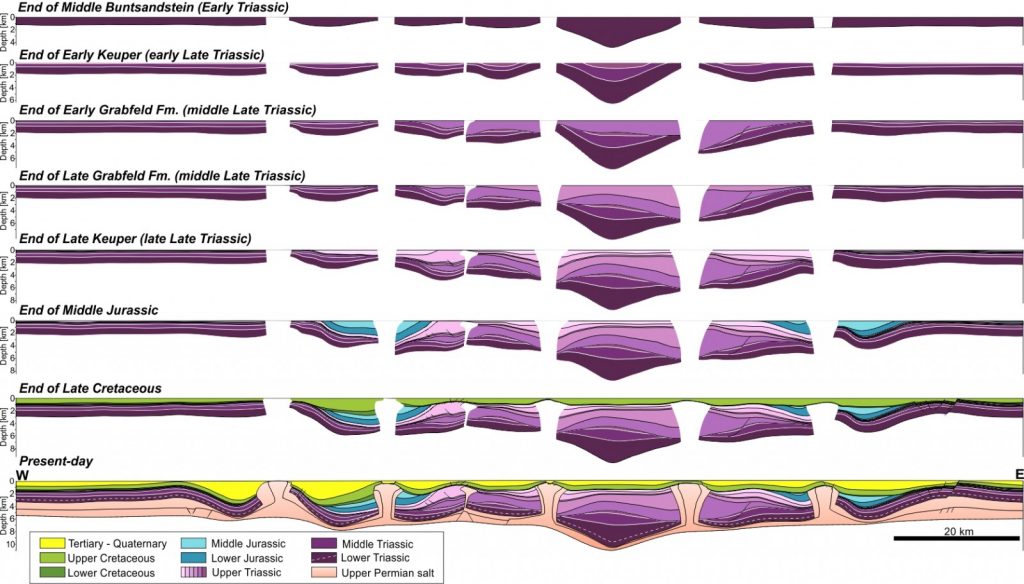
Fig 1: 2D restoration of the supra-salt (post-Permian) strata in the Glückstadt Graben (Northern Germany). Credit: Michael Warsitzka
Using experimental and geological cross sections, structures in the overburden of the ductile layer can be reconstructed, if present-day layer geometries and lithologies of the overburden strata can be identified. From natural clastic and carbonatic sediments we know that they compact with burial, reducing the layer thickness. Therefore, the reconstruction procedure sequentially removes the uppermost layer and layers beneath are decompacted and shifted upwards to a horizontal surface (Fig. 2). The sequence of decompaction and upward shifting is then repeated until the earliest, post-salt stage is reached (Fig. 1). It intends to restore the initial position, shape and thickness of each reconstructed layer.
In analogue experiments, no decompaction is necessary, because the compressibility of the granular material is insignificant for depths of a few centimetre. Restoration can be directly applied to coloured granular layers revealing detailed layer geometries for each experimental period (Fig. 2a). The PIV technique displays coeval material movement and strain patterns occurring during the subsidence of the experimental minibasins (Fig. 2b). Based on the observation that the experimental structures resemble those reconstructed from the natural example (Glückstadt Graben during the Early Triassic, Fig. 1), it can be inferred that strain patterns observed in the experiments took place in a similar manner during the early stage of extensional basins. This demonstrates the advantage of applying both methods. First, original geometries of basin structures can be determined from the restoration and then reproduced in the model. If the restored geometries are suitably validated by the models, the kinematics observed in the model can be translated back to nature and help to understand the effect of salt flow on the regional subsidence pattern.
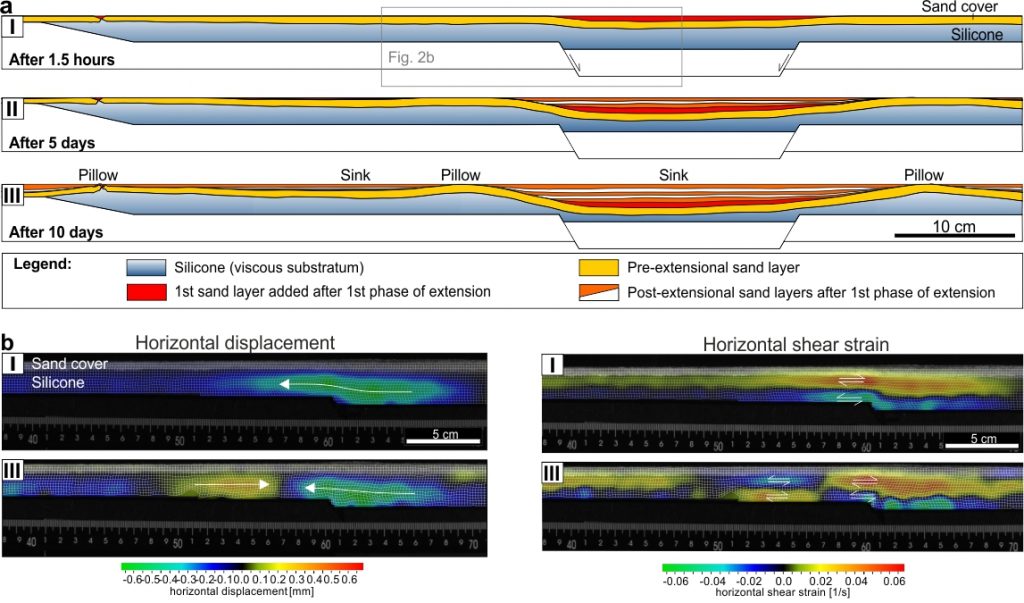
Fig 2: Result of an analogue model showing (a) reconstructed sand layers restored from a central cross section, and (b) monitored displacement and strain patterns in the viscous layer above the left basal normal fault. Credit: Michael Warsitzka



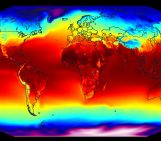
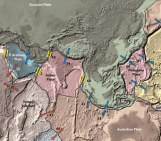
Pingback: GeoLog | Imaggeo on Mondays: The salt mine carving into the Carpathians - GeoLog